The Llynfi and Garw Valleys
Early during the 19th century Wales saw a period of rapid industrialisation. The south Wales valleys became peppered with ironworks (we visit three on this ride), and coal mines and this progressive urbanisation continued well into the mid-century. It’s my aim to cycle down as many Welsh valleys as is possible, visiting the local industrial archaeology. Today we start this ride at Maesteg which lies at the middle of the Llynfi Valley and continue west across the Mynydd Caerau to Blaengarw and down the Garw valley, then south west back to Port Talbot.
Maesteg to Blaengarw to Port Talbot (34 miles)
 Maesteg’s iron connection is not as evident as Blaenavon, but it is there if you know where
to look; the former blast engine house is still used (click the image for more), known as the ‘Cornstores’ it forms part
of the modern-day Maesteg sports centre, and there’s also a partially intact blast furnace next
door. We climb gently towards Ysgol Gyfun Maesteg Comprehensive School (where
St Johns colliery once stood) and past the new wetlands area (created on and near the former
Maesteg colliery washery), climbing on the NCN885 which occupies the course of the old North
Navigation railway. Just out of Nantyffyllon was the Coegnant Colliery, in 1882 the ‘Llynfi
Coal & Iron Company’ began sinking the mine to work the rich six feet seam at 400 yards
deep, it lasted one hundred years shutting in the eighties. We turn right at Tudor Park Caerau
then head up the Mynydd Caerau on a forestry path, the views were truly exceptional. It gets a
little colder traveling through the Caerau forest and after 6½ miles we reach our
highest altitude of just over 1400 feet. The descent through the Dunraven forest is welcome, but we come
across a landslip, with barriers across the road. I climbed over the barrier and surveyed the
foot wide path on foot, it was passable walking, just! I lifted the bike over and walked across the narrow
strip, if I had slipped, well the consequences didn't bear thinking about.
Maesteg’s iron connection is not as evident as Blaenavon, but it is there if you know where
to look; the former blast engine house is still used (click the image for more), known as the ‘Cornstores’ it forms part
of the modern-day Maesteg sports centre, and there’s also a partially intact blast furnace next
door. We climb gently towards Ysgol Gyfun Maesteg Comprehensive School (where
St Johns colliery once stood) and past the new wetlands area (created on and near the former
Maesteg colliery washery), climbing on the NCN885 which occupies the course of the old North
Navigation railway. Just out of Nantyffyllon was the Coegnant Colliery, in 1882 the ‘Llynfi
Coal & Iron Company’ began sinking the mine to work the rich six feet seam at 400 yards
deep, it lasted one hundred years shutting in the eighties. We turn right at Tudor Park Caerau
then head up the Mynydd Caerau on a forestry path, the views were truly exceptional. It gets a
little colder traveling through the Caerau forest and after 6½ miles we reach our
highest altitude of just over 1400 feet. The descent through the Dunraven forest is welcome, but we come
across a landslip, with barriers across the road. I climbed over the barrier and surveyed the
foot wide path on foot, it was passable walking, just! I lifted the bike over and walked across the narrow
strip, if I had slipped, well the consequences didn't bear thinking about.
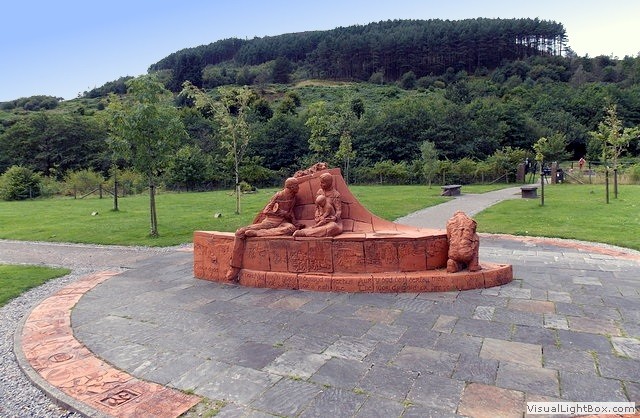 Now descending through dense managed forests on a gravel track theres what looked like a
tunnel. Only on further research back at home did I discover it was a 'drift coal
mine'. Reaching the village of Blaengarw, the uppermost suburb in the Garw valley I was
looking forward to a cup of tea. Now in 'Parc Calon Lân' there was a visitor centre, alas
it was shut, the park was named after the bard Daniel James, author of the much loved
hymn 'Calon Lân', who lived and worked here during the 1890’s. The song has become firmly
established as a rugby anthem, associated with the Welsh rugby union, being sung before
almost every International match involving the Wales.
Now descending through dense managed forests on a gravel track theres what looked like a
tunnel. Only on further research back at home did I discover it was a 'drift coal
mine'. Reaching the village of Blaengarw, the uppermost suburb in the Garw valley I was
looking forward to a cup of tea. Now in 'Parc Calon Lân' there was a visitor centre, alas
it was shut, the park was named after the bard Daniel James, author of the much loved
hymn 'Calon Lân', who lived and worked here during the 1890’s. The song has become firmly
established as a rugby anthem, associated with the Welsh rugby union, being sung before
almost every International match involving the Wales.
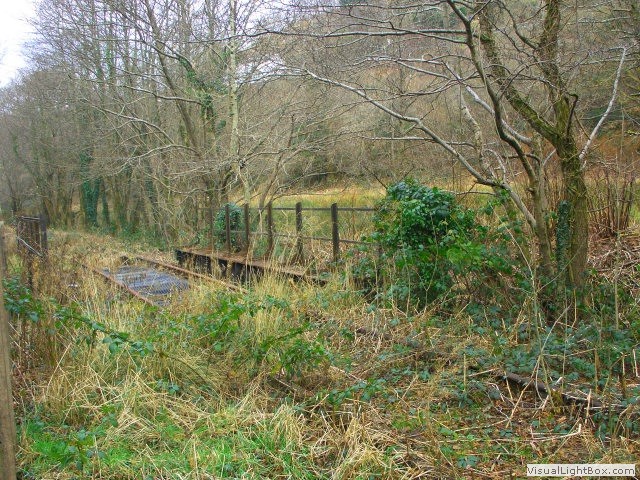
We’re now on the line of the old Garw Valley railway gliding downhill alongside the Afan Garw and past another pleasant lake at Pontycymmer. Here in a modern tin shed is the terminus of the newly formed Garw Valley Railway, the society aims to preserve and re-open the former Garw branch line railway all the way back to Tondu. I really wish them luck, but I feel they have their work cut out for them, the infrastructure is still there, but I can see some of the foundations have given way along the route. We ride through LLageinor, situated in one of the most scenic and picturesque valleys in South Wales. The cycle path finishes at Bryngarw country park, where there’s Cedars Tea Room and I was now desperate for tea. I just managed to get there before closing, but much to my dismay there was a large gaggle of toddlers who decided to have a screaming match at each other. They may not have full control of their bowels at this age yet, but they’re certainly very capable of making ear drums bleed from twenty paces with their high pitched shrieking.
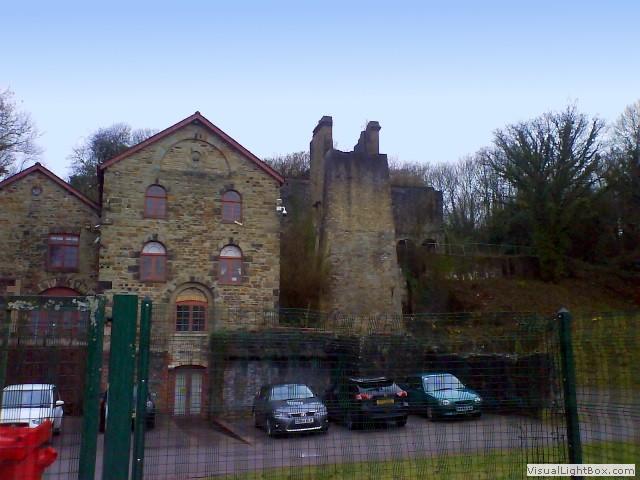 After a brew at Cedars Tea room it’s onto Brynmenyn and Tondu railway station, there’s moss growing
on the railway overpass, and the large gates leading to the signal box (and live tracks) were
wide open, it’s like the town doesn’t care any more. We wanted to
re-visit the Tondu Victorian Ironworks (visited in 2014 but worth another visit, click image for older version). The
gate was open so we went in, straight away we were accosted by a chap who said the place
was closed to the public as the premises are now private property. When you looked around
you could see the site was overgrown, with some of the buildings fenced off, and the car
park had moss over it. When I got home I found out the former charity that ran the place
had collapsed, I hope a new venture will take over it soon, but how
can a grade I listed building (owned by CADW and therefore by the public) be private? After
the ironworks we turn right onto a great western railway trackbed, on one of many railways
that riddled the Tondu area. Next to Tondu Methodist Church is the NCR10, under a bridge
then onto wooden boards, some of the boards are broken, but we easily coast over them
without an issue.
After a brew at Cedars Tea room it’s onto Brynmenyn and Tondu railway station, there’s moss growing
on the railway overpass, and the large gates leading to the signal box (and live tracks) were
wide open, it’s like the town doesn’t care any more. We wanted to
re-visit the Tondu Victorian Ironworks (visited in 2014 but worth another visit, click image for older version). The
gate was open so we went in, straight away we were accosted by a chap who said the place
was closed to the public as the premises are now private property. When you looked around
you could see the site was overgrown, with some of the buildings fenced off, and the car
park had moss over it. When I got home I found out the former charity that ran the place
had collapsed, I hope a new venture will take over it soon, but how
can a grade I listed building (owned by CADW and therefore by the public) be private? After
the ironworks we turn right onto a great western railway trackbed, on one of many railways
that riddled the Tondu area. Next to Tondu Methodist Church is the NCR10, under a bridge
then onto wooden boards, some of the boards are broken, but we easily coast over them
without an issue.
We head for the Wildlife Trust of South & West Wales and sharply turn away south on an old South Wales Tramway near Parc Slip Colliery, then rejoining and paralleling the live Brynmenyn railway line (though very little used). Just across the main line on a official crossing point is Cefn Junction signal box, now disused, but there can’t be many more signal boxs’ loved as much as this one with almost 400 members of the Cefn heritage society looking after it. The signal box started work in 1898 at the junction made by the newly-opened Port Talbot line and the older Porthcawl Branch. By 1974 the Porthcawl line (immediately in front of the signal box) had disappeared, but the box and Port Talbot line remain. We re-cross the main line only to cross it again later on to visit Beford park which contains Cefn Cribwr Ironworks. Here are the remains of a charcoal-fuelled iron furnace built by John Bedford of Birmingham, after he acquired the estate in 1771. There’s a high-level charging ramp to the furnace with three calcining kilns, ruins of the casting-house and a later 1820s beam-engine house.
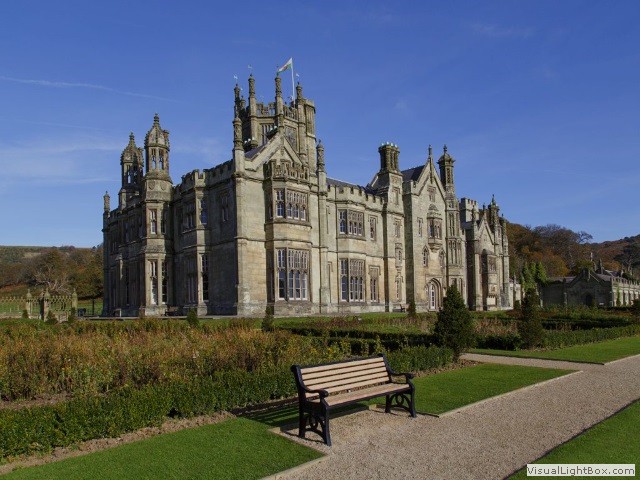 We now head west towards Kenfig Hill and jump onto the busy A48 on a dedicated cycle
path. We entered the road leading to Margam Castle and was greeted with locked gates
(well it was 1715). After circling around for two minutes, a local dog walker pointed
me in the right direction; the ‘right of way path’ was about two mile’s up the hill,
but I’d had enough of hills that day. The pedestrian gate was open, so I plodded through
not knowing if I could actually get out the other side, past a lake and ‘Go Ape’, through
another gate and there it was Margam Castle. It was slightly surreal, with not a sole around,
the castle was silhouetted against the setting sun, and was quite magical, as if I’d been
granted unrestricted access exclusively for me alone. For those people who have visited
‘Disneyland’ and seen their mythical castle, I have to say it was as gobsmacking as that
view (except Margam Castle had Port Talbot steelworks in the background).
We now head west towards Kenfig Hill and jump onto the busy A48 on a dedicated cycle
path. We entered the road leading to Margam Castle and was greeted with locked gates
(well it was 1715). After circling around for two minutes, a local dog walker pointed
me in the right direction; the ‘right of way path’ was about two mile’s up the hill,
but I’d had enough of hills that day. The pedestrian gate was open, so I plodded through
not knowing if I could actually get out the other side, past a lake and ‘Go Ape’, through
another gate and there it was Margam Castle. It was slightly surreal, with not a sole around,
the castle was silhouetted against the setting sun, and was quite magical, as if I’d been
granted unrestricted access exclusively for me alone. For those people who have visited
‘Disneyland’ and seen their mythical castle, I have to say it was as gobsmacking as that
view (except Margam Castle had Port Talbot steelworks in the background).
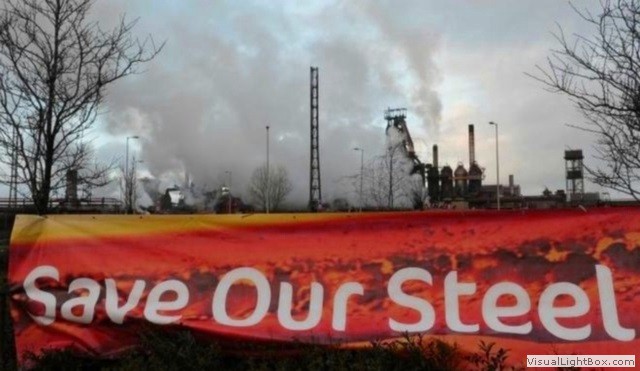 We ride passed the Margam Stones Museum set in a small Victorian schoolhouse, which
provides a home for one of the most important collections of Celtic stone crosses
in Britain. Two hundred yards from there, is a set of Gorsedd Stones, these
are commemorative structures unique to Wales and are the hallmark of the National
Eisteddfod having visited a community. It’s now only a few miles to Port Talbot
and the train home. The blast furnaces dominate the skyline and leave a smell
of sulphur and burning coal hanging over the district, but the prospect without them would
devastate the town.
We ride passed the Margam Stones Museum set in a small Victorian schoolhouse, which
provides a home for one of the most important collections of Celtic stone crosses
in Britain. Two hundred yards from there, is a set of Gorsedd Stones, these
are commemorative structures unique to Wales and are the hallmark of the National
Eisteddfod having visited a community. It’s now only a few miles to Port Talbot
and the train home. The blast furnaces dominate the skyline and leave a smell
of sulphur and burning coal hanging over the district, but the prospect without them would
devastate the town.
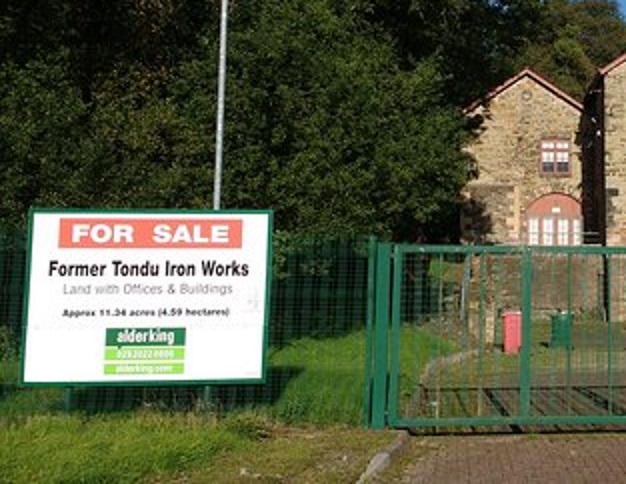 Many preservation projects start in good faith, then decline when the collaborative
enterprise’s are handed over to the communities for upkeep, this is not a slur on those
hard working community organisations, it's just they haven’t got the money. 'Parc Calon
Lân' has a visitor centre; that was shut. The Garw valley cycle path is exceptionally
pretty, but very under used (maybe due to no cycle transport to the top of the valley).
‘The Bridgend Valleys Railway Society’ could reverse that when they finally extend to
Tondu, but they too are really struggling to meet their aspirations. Then we have Tondu
ironworks, it’s the best preserved Victorian ironworks in Wales and was developed into a
heritage park attraction for local people, visitors and schoolchildren with excellent
facilities; closed in 2016. The Garw valley is littered with good intention projects
that seem to have fallen by the wayside, why have these ventures failed?
Many preservation projects start in good faith, then decline when the collaborative
enterprise’s are handed over to the communities for upkeep, this is not a slur on those
hard working community organisations, it's just they haven’t got the money. 'Parc Calon
Lân' has a visitor centre; that was shut. The Garw valley cycle path is exceptionally
pretty, but very under used (maybe due to no cycle transport to the top of the valley).
‘The Bridgend Valleys Railway Society’ could reverse that when they finally extend to
Tondu, but they too are really struggling to meet their aspirations. Then we have Tondu
ironworks, it’s the best preserved Victorian ironworks in Wales and was developed into a
heritage park attraction for local people, visitors and schoolchildren with excellent
facilities; closed in 2016. The Garw valley is littered with good intention projects
that seem to have fallen by the wayside, why have these ventures failed?
Often grant-makers will fund schemes for three years without ensuring a project is sustainable, once they have retreated with the purse, the result is; redundant staff, collapsed services, and disappointed public. The National Lottery is a sham, and pretends to be the saviour of many good causes, however the truth is they are a private company siphoning money from a self-fulfilling public money tree to bolster their own profits. There is something very poignant about encountering fragments of Britain’s industrial past, evoking a way of life that no longer resonates. The UK has lost its heavy industries, and we have become a nation of call centres, and retail parks. The UK lottery should be a non-profit organisation then the 71 million pounds profit they made in 2017 would go to these struggling heritage projects and of course other good causes. I'll say it again £71m of your £2 lottery tickets or scratch cards, have gone to Camelot Group company in 2017 (and thats just one year).
-
Gallery
 Why not have a look at the gallery relating to this ride. Click the image or the title.
Why not have a look at the gallery relating to this ride. Click the image or the title. -
Keeper Of The Collieries
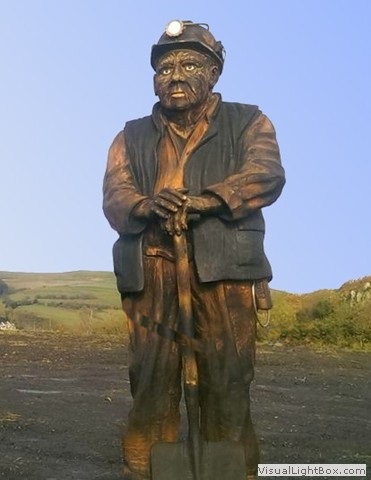 The oak sculpture (click the image for larger view) of the ‘Keeper of the Collieries’ stands where the old Coegnant
Colliery and Maesteg Washery was once located. From a distance it looks like one of the
former Llynfi Valley's miners has just been brought up from the pit after finishing his
shift. Though the reality was; less than twenty four hours after the winding wheel brought up the last shift
of miners, demolition workers moved in and began tearing the colliery down. This oak miner looks
sad, is he watching the end of an era?
The oak sculpture (click the image for larger view) of the ‘Keeper of the Collieries’ stands where the old Coegnant
Colliery and Maesteg Washery was once located. From a distance it looks like one of the
former Llynfi Valley's miners has just been brought up from the pit after finishing his
shift. Though the reality was; less than twenty four hours after the winding wheel brought up the last shift
of miners, demolition workers moved in and began tearing the colliery down. This oak miner looks
sad, is he watching the end of an era? -
A short history of the Garw Valley
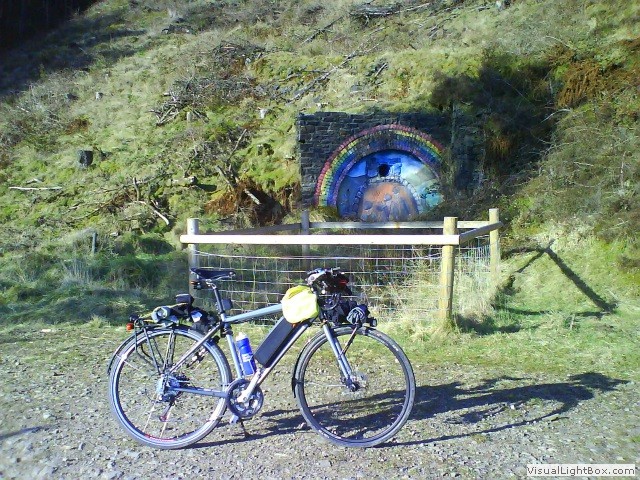 The title was an essay written in the 1930’s. I found out reading it that before the major
companies and coal barons, Wales had their own ‘free miners’. The Garw valley had extremely
steep sides which made it difficult to deep mine, but the horizontal seams of coal were
ideal for drift mining. Though what makes the Garw Valley unique is the way they transported
the coal away from the face. The coal was saturated with water, to get rid of this the free
miners made subterranean Levada’s and used these mini canals to float the coal out on
barges. The mine entrance has a mural painted by local school children as a mark of
respect to a forgotten industry.
The title was an essay written in the 1930’s. I found out reading it that before the major
companies and coal barons, Wales had their own ‘free miners’. The Garw valley had extremely
steep sides which made it difficult to deep mine, but the horizontal seams of coal were
ideal for drift mining. Though what makes the Garw Valley unique is the way they transported
the coal away from the face. The coal was saturated with water, to get rid of this the free
miners made subterranean Levada’s and used these mini canals to float the coal out on
barges. The mine entrance has a mural painted by local school children as a mark of
respect to a forgotten industry. -
Bryngarw Park
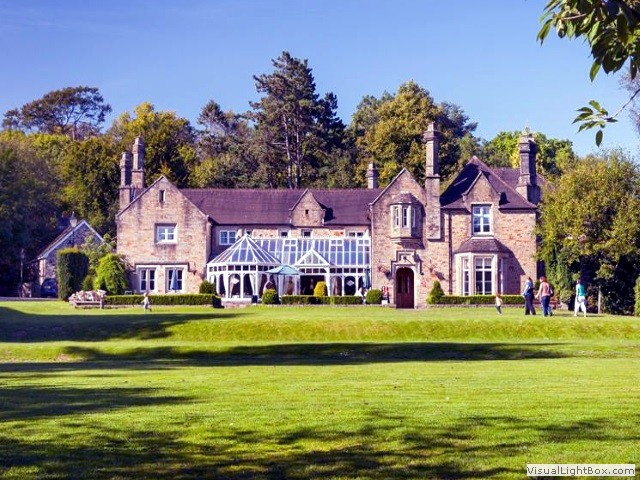 Bryngarw Park was established in 1775 and comprised of a country house, formal gardens
and adjacent park land, the Country Park was officially opened to the public in 1986, after
25 years of neglect. The house itself isn’t architecturally that spectacular and looks more
like a nursing home than a stately home.
Bryngarw Park was established in 1775 and comprised of a country house, formal gardens
and adjacent park land, the Country Park was officially opened to the public in 1986, after
25 years of neglect. The house itself isn’t architecturally that spectacular and looks more
like a nursing home than a stately home. -
Parc Slip Colliery disaster
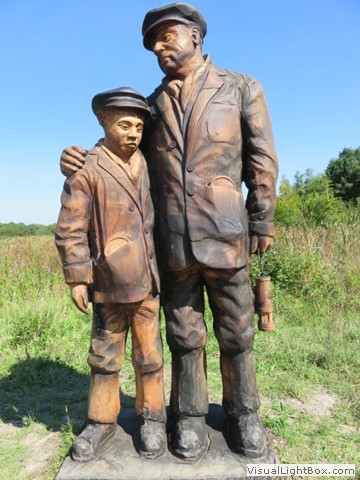 On a summers morning in 1892 it was business as usual in Parc Slip Colliery. After the
shift, everyone was looking forward to a night of relaxation and fun, as today was the
annual St Mary Hill Fair, but there would never be frivolity on this day again after a massive
explosion ripped through the mine. The explosion was
apparently caused by a hole in one of the workers' Davy lamps. Rescue attempts were hampered
by roof falls, but by late afternoon 42 miners had been brought out alive, though some later
died of their injuries, the total death toll was 112 men and boys (click the image for a larger view). The site is now a nature
reserve which is managed by the Wildlife Trust of South & West Wales and there’s a
memorial of 112 stones representing the deceased.
On a summers morning in 1892 it was business as usual in Parc Slip Colliery. After the
shift, everyone was looking forward to a night of relaxation and fun, as today was the
annual St Mary Hill Fair, but there would never be frivolity on this day again after a massive
explosion ripped through the mine. The explosion was
apparently caused by a hole in one of the workers' Davy lamps. Rescue attempts were hampered
by roof falls, but by late afternoon 42 miners had been brought out alive, though some later
died of their injuries, the total death toll was 112 men and boys (click the image for a larger view). The site is now a nature
reserve which is managed by the Wildlife Trust of South & West Wales and there’s a
memorial of 112 stones representing the deceased. -
Margam Castle/ Abbey
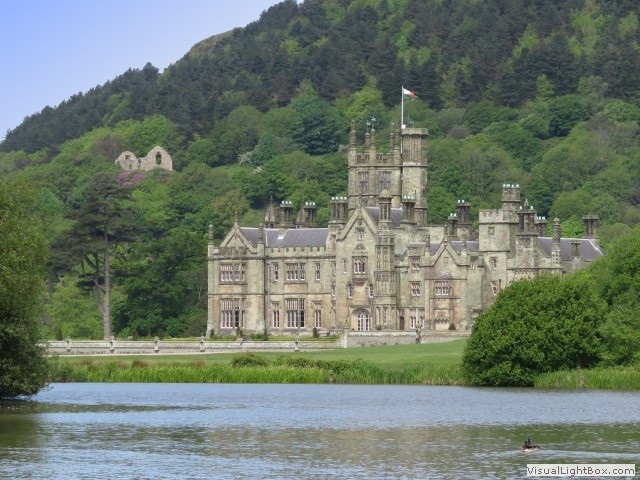 The castle is really a country house, one of many ‘mock’ castles
built in the 19th century during the gothic revival, this one was designed by the architect
‘Thomas Hopper’ for ‘Christopher Talbot’ (the former Port Talbot steelworks owner). The house was built
between 1830 and 1840 using sandstone from the nearby Pyle quarry. It’s a Grade I listed
mansion of exceptional quality, with some spectacular features such as the vast stair
hall and octagonal tower.
The castle is really a country house, one of many ‘mock’ castles
built in the 19th century during the gothic revival, this one was designed by the architect
‘Thomas Hopper’ for ‘Christopher Talbot’ (the former Port Talbot steelworks owner). The house was built
between 1830 and 1840 using sandstone from the nearby Pyle quarry. It’s a Grade I listed
mansion of exceptional quality, with some spectacular features such as the vast stair
hall and octagonal tower.
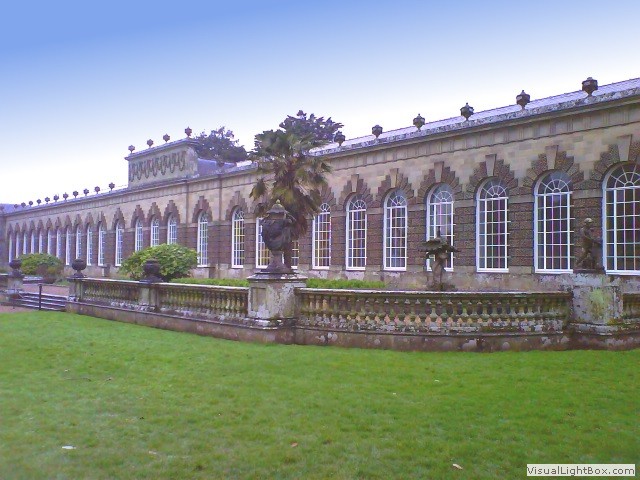 The park also has an orangery (an essential part of any Victorian
stately home), built around 1790, it's magnificently ornamental aligned east-west,
and is the longest Orangery in the UK.
The park also has an orangery (an essential part of any Victorian
stately home), built around 1790, it's magnificently ornamental aligned east-west,
and is the longest Orangery in the UK.
Margam Park has another surprise, that of Margam Abbey consisting of impressive monastic ruins, dating back to the 13th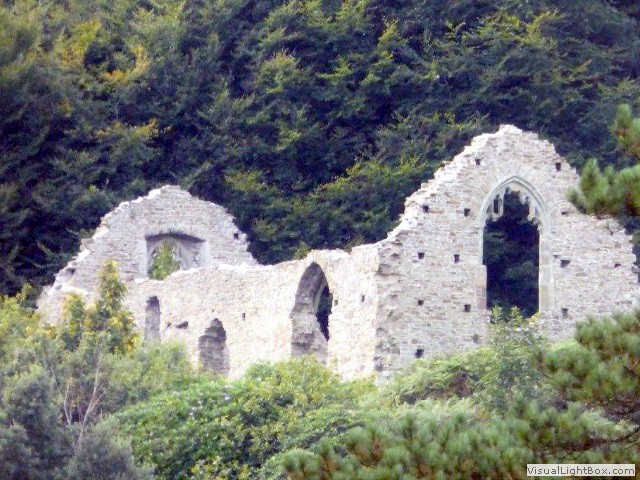 century. The Abbey has a hidden stratification secret; set on
a hill overlooking the ecumenical vestiges stand the ruins of
‘Capel Mair ar y Bryn’, a small church built as a place of worship for the local peasants and
yeomen who didn’t have high enough social status to worship in Margam Abbey itself.
century. The Abbey has a hidden stratification secret; set on
a hill overlooking the ecumenical vestiges stand the ruins of
‘Capel Mair ar y Bryn’, a small church built as a place of worship for the local peasants and
yeomen who didn’t have high enough social status to worship in Margam Abbey itself. -
What a great day!
It’s been a beautiful sunny day and we're near the end of our ride, and as with most of our adventures it’s not many miles, but it’s been a long hard leg biting day; two valleys, three ironworks, two stately homes, an Abbey, and a heritage railway. We sat in silence on the train back, mulling over the day...... This has truly been an exceptional, fantastic ride, and I know it sounds daft, but the day has left me with more energy and bouncing with enthusiasm for the next.
